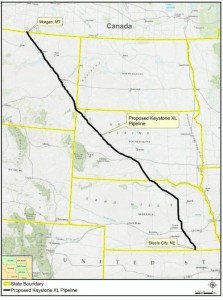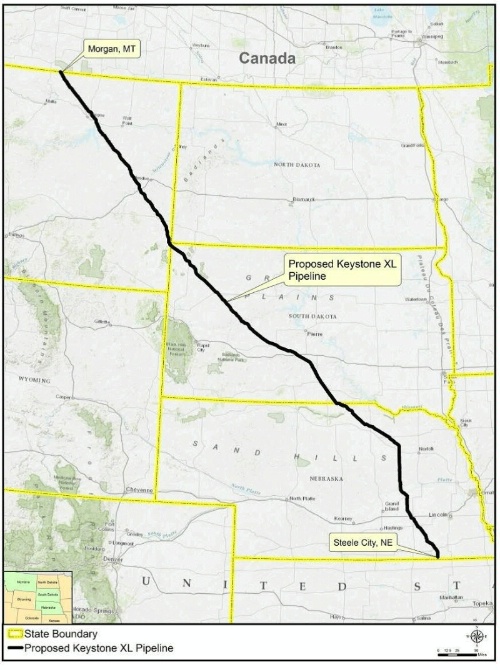
The U.S. Department of State recently released the Final Supplemental Environmental Impact Statement (EIS) for the Keystone XL Pipeline Project.
The report will be open until March 7 for public comment. It will be up to Secretary of State, John Kerry, and other agency heads to review and to advise President Barack Obama to approve or deny the project.
The EIS is a technical assessment of all potential environmental impacts in the United States related to the pipeline project to move crude oil from Alberta, Canada to Oklahoma. Since the project crosses U.S. borders, State Department approval is required.
Of the 1,179 miles of pipeline, 875 miles are found in the United States, running from Morgan, Montana to Steele City, Nebraska. The pipeline would provide delivery up to 830,000 barrels per day (bpd) of crude oil from the Western Canadian Sedimentary Basin in Canada and the Bakken Shale formation in the United States to Steele City, for further transport to refineries in the Gulf Coast area.
The EIS includes a proposed project description and an extensive look at potential environmental impacts, such as:
• Climate change in relation to lifecycle greenhouse gas emissions from the project, refining and consumption
• Potential oil spills or releases
• Socioeconomic impacts
• Water issues, looking at surface water and aquifers
• Wetlands
• Threatened and endangered species
• Geology and soils
• Vegetation
• Fish and wildlife
• Air and noise quality
• Cultural impacts
• Cumulative effects
The report indicated the Canadian tar sands are likely to be developed regardless of the project outcome. Increase in rail loading and unloading of crude oil has increased since 2013, so movement of oil has kept up with production in Canada.
The EIS can be found on the State Department’s Web site, www.keystonepipeline-xl.state.gov.




